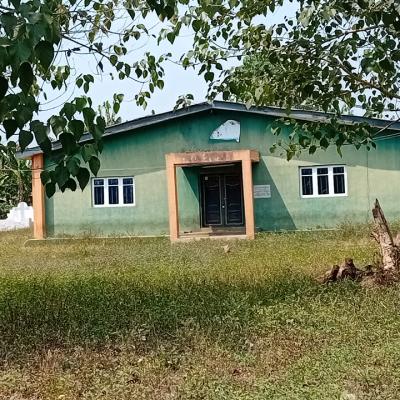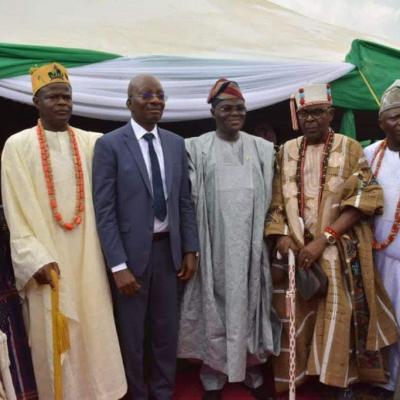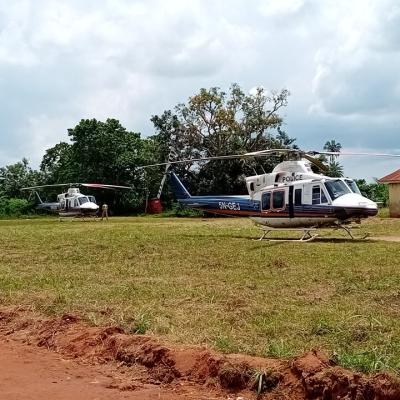A History of Erinja.
The present day Erinja was founded by Ireja, who migrated from his town in Ife to Erinja present site long before the eighteenth century. Although, it is impossible to fix the date of migration, it was an aspect of the general movement of different Yoruba-speaking groups southwards and westwards, a phenomenon generally associated with the late sixteenth and early seventeenth centuries.
According to the myths of origin, a dispute arose between ireja (a member of a ruling house in his town) and one of his brothers over ascendancy among his supporters, to migrate accompanied him were ifemo, Ijisu, Ikoto, Ikemi, Idode, Ipetumara, Ifosi and Ifonta. His Wife, Omosede, two children, Adefisoye and Adeyosoye, and a younger brother Ogunsanmi together with Ogunsami’s four children, Adeogun, Gbolahan.
Oguniran and Adelakun, Were also with the migrant group.
On his way to the south, Ireja called at Oyo, Where he consulted with the Alaafin who promised him his support. He later arrived at Panku in Ketuland where he similarly received the blessings of the Alaketu. He finally arrived and settled at Erinja’s present site, naming it after himself. His henchmen later established their farms in the surrounding area and named them after themselves, namely, Ijisu, Ikkoto, Ikemi, Idode, Ipetumara, Ifosi, Ifonta, and Eyo-kini-onigba-nta. All these villages were later commonly reffered to as ifemoland, while the area subsequently became expanded and was referred to as “Erinja Kingdom”.
Soon after founding Erinja,Ireja was crowned as the Elerinja (King) of Erinja, and his title was ratified by the Alaafin of Oyo, the Oni of Ife and the Alaketu of Ketu, During this time and up to the first three decade of the nineteen century, Erinja formed a small political kingdom under its own independent king However, like most other traditional Egbado states including ilaro, Ijanna, and ifonyin, Erinja paid tribute to old Oyo. Indeed, as late as 1825, when the power of Oyo was on the wane, Captain Hugh Clapperton, the famous British explorer, who was accompanied by Richard Lander, passed through this area en route Sokoto and found that all the Egbado groups paid toll to the Alaafin.
Before his death, Ireja had three more children: Olajuwon, Adeyemi and Adekunle. Among the eleven Elerinjas, who succeeded to the title prior to the third decade of the nineteenth century were indeed two of Ireja’s sons, Adeyosoye and Adefisoye.
Erinja had its own share of the nineteenth century warefare in Yorubaland. Like the Other Western Yoruba communities located generally between the Ogun and Weme-Opara river systems, Erinja’s experience derived largerly from a position in which the community was sandwiched between the emergent.
Military and terribly expansionist states of the Egba of Abeokuta in the east and the Fon kingdom of Dahomey in the west. However, the war which directly affected Erinja was that of 1836 in which the Egba of Abeokuta, aided by Oba Adele of Lagos at that time in exile at Badagry, fought against Egbado, communities, including ifemoland settlements, Ilobi and Ilaro were ravaged and destroyed in retaliation for the refusal, particularly of the Elerinja, to allow the army of Oba Adele to pass through his territory to aid the Egba in their war against the ijebu at Owiwi in 1832. It was the war refugees especially from Erinja, Ilobi and Ilaro which combined to found Oke-Odan in the late 1830’s. The dominance of Erinja in the foundation and subsequent politics and administration of Oke-Odan as a new southern Egbado metropolis is borne out by the role credited to Adeyemi, the reigning Elerinja, and his successors from 1836 to 1935.
Like Abeokuta of the Egba, Ibadan of the Oyo, Ijebu-Ode of the Ijebu: Kosoko’sEpe, Sagamu of the Remo and Ayede of the Ekiti, Elerinja’sOke-Odanwas the most important southern Egbado metropolis which resulted directly from the events generated by the wars of the nineteenth century.
The political organization of Oke-Odan in the 1840’s was based on the model of traditional Yoruba towns where each town comprised a number of descent of groups of heterogeneous origins, in Oke-Odan were the Erinjas, Eyos, Ilaros and Ilobis. Each descent group elected from among its own members three titled chiefs – a Balogun, an OtunBalogun and an OsiBalogun – with a seat on the governing council, and the decisions reached by the chiefs were then communicated to the Elerinja (whose title remained as before) who announced them as his own. In addition to these, there were two quarter military chiefs, the two Apenascivil title of the heads of the Ogboni cults. The significance of the Elerinjaderived from the
fact that he was the first and only crowned head to settle with the Egbado refugees in Oke-Odan.
In 1848, Oke-Odan was destroyed by the Dahomeans and many of its inhabitants re-crossed the Yawariver land settled at Ajilete on the east bank of the river. In the meantime, when Erinja was resettled about 1811 by a group of Erinjas who had returned after the 1832-36 war, it became expedient for the returnees to ensure that a proper defense was arranged for the town against further possible external, aggression. It was about this time that Vwesu, a warrior of the Egun or Gun subgroup of the Adja speaking people of the Fon kingdom of Dahomey arrived from Epo near Panku in Ketuland, and he was redily welcomed and given land to settle at Erinja, thereby founding the quarters now known as Ago Egun.
It will be recalled that the Egba military ascendancy in Central Egbado and Ota in the period 1830-1850 was naturally considered a threat to the independence which the Fon kingdom in Dahomey has won from Old Oyo in the early 1820s. The excuse for Dahomey’sattack on the Egbawasfound when Ado-Odo in its confrontation with the Egba in 1844, appealed to Dahomey through Porto-Novo for military assistance. The Egun warrior who later settled in Erinja at the end of that war was one of the Dahomeansoldeiers who fought the 1844 battle at Ado-Odo, although the Dahomeans lost that war to the Egbas. The Fon humiliation in Ado Odo Eventually became an important determinant for the subsequent Dahomean aggression against the Egba in Abeokuta in 1851.
Adeyemi died at Oke-Odan in 1854 and was succeeded by Ogunsoloye, as “Elerinja of Erinja, Oba Oke-Odan”. One of Ogunsoloye’s major political initiatives was to consider the advisability of obtaining British protection against the Egba who were becoming Oke-Odan’s masters instead of its allies, on the one hand, and possible further Dahomean attack on the other. British protection was granted in 1863 when as a result ofOlajulo fearing another Dahomeanattack, requested that Oke-Odan be taken under British protection once again, the treaty of 1863 having lapsed. However, no heed was paid to his request. A year later, Oke-Odan was destroyed the second time by the Dahomeans. It was a great destructin vividly described by Governor Denton of Lagos seven years later when he visited the town.
Olajulo died in 1900 and was succeeded by Akinosi who reigned as Elerinja of Oke-Odan until his death in 1935. During this period, the affairs of Oke-Odan were administered by rheElerinja and council. It is also significant to note that from the time the title “Elerinja of Oke-Odan in 1880, to the year when the last holder of the chieftaincy title died. The Elerinja of Oke-Odan was selected only from among the eligible candidates in the Erinjaroyal lineage or ruling houses, namely, Omoniyi house, Aina house and Akinogun house.
Following the death of Akinosi in 1935,theOmoniyi ruling house (on of the Erinla ruling houses mentioned above) was called upon to nominated a candidate to fill the vacant stool.
However, in the meantime, a new public opinion had started to agitate against the title of the Elerinja in Oke-Odan. There were those semantics who questioned the appropriateness of the title “Elerinja of Oke-Oda”. They argued that the title was a contradiction in terms. They won the semantic war when the then District Officer, In Ilaro agreed that the title should be altered to Oloke-Odan chieftaincy should cease to be limited to the Erinja ruling houses. Under the intense political pressure that followed, and most against chieftaincy tradition, the Erinja ruling house nominee was outvoted. So, the first Oloke-Odan emerged in 1938, finally, submerging, as it were the Elerinja chieftaincy title. The Elerinja royal paraphernalia were subsequently transferred and the negotiations carried out through the District Commissioner in Badagry, Governor Glover, accompanied by Mr. Thomas Tickle (The District Commissioner), visited OkeOdan on 4th July of that year and concluded the treaty of protection with the people of ishagbo and those of Oke-Odan. The treaty was recorded in Pyane’s Lagos Diary as fully ratified by the then British Secretary of State, the Duke of Newcastle, Indeed, as a result of the treaty, Mr Tickle was appointed Resident Agent at Oke-Odan in 1864, although he never took up his permanent residence there as he preferred to stay in Badagry.
Meanwhile, about nine years after the defeat of the Dahomeans by the Egba at Abeokuta in the 1851 war, the Egba ravaged and destroyed the region of Aibo, Idofoi, Erinmado and Afon on the pretext that these communities had acted as spies for Dahomey during the encounter.
As a result, a group of Erinmados migrated southwards and settled at Erinja about 1860, thus founding Emado quarters. About three years later(1862-1863), the Dahomeans, in turn, attacked and invaded Isaga, Ibara, Ilewo, Jiga, Imasayi and Saala and created panic in the surrounding townships on the pretext that these communities had acted as spies for the Egba in the 1851 war, Some of the refugees who migrated southwards were offered land to settle by the Elerinja of Erinja, Oba Oke-Odan, in the areas now known as Oko-Baba, Eburo-Ogun, Abioro, Egunjobi, Fadairo, Apara, Egunleti and Awuko given to Ekunomo and Ayo from Abeokuta to settle.
In 1880, following the death ofOgunsoloye, the Erinja Section of Oke-Odan succeeded in persuading the other sections to agree to the change of title of the king from “Elerinja of Erinja Oba Oke-Odan” to Elerinja of Oke-Odan. Thus Olajulo was crowned the first “Elerinja of Erinja Chieftaincy to Erinja, a process that was not completed until 1938.






